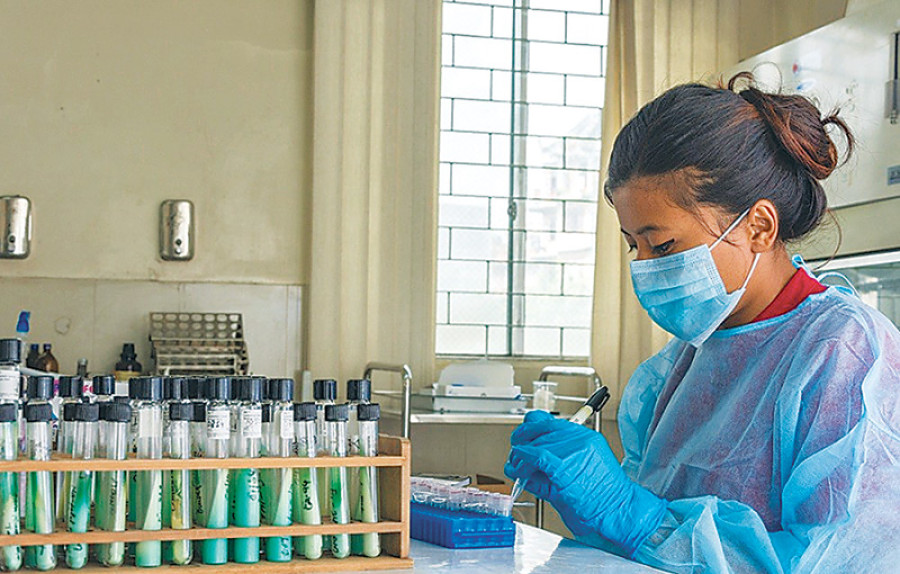Editorial
Accelerate action to #EndTB
We need an evidence-based strategic plan to fill the gap in tuberculosis detection and cure.
Tuberculosis is one of the world’s deadliest infectious diseases. Contagious and airborne, the disease remains a major public health issue in Nepal. According to the National Tuberculosis Prevalence Survey 2018-19, at least 46 people die of the disease every day throughout the country, causing a significant burden of morbidity and mortality. The disease, according to the survey, kills some 17,003 people every year, making it one of the leading causes of deaths in Nepal.
The study also revealed around two times higher prevalence and 1.6 times higher incidence of the disease than previously estimated—some 117,000 people in the country have acquired tuberculosis, and some 69,000 people developed tuberculosis in 2018. But similar to Covid-19, new infections and tuberculosis related deaths can be prevented. Timely diagnosis and treatment can even cure patients but ‘hidden cases’ amid poverty, stigma and lack of awareness continue to pose challenges in preventing further spread of infection in the country.
The pandemic has further complicated the tuberculosis situation in the country. It could push back all progress achieved in the previous decade if we do not accelerate a nationwide action to deal with what, public health officials warn, could be the next epidemic. According to an assessment carried out in all the seven provinces of the country earlier this year, detection of new tuberculosis cases has declined by 50 percent, and more than 50 percent of tuberculosis treatment centres were affected since the nationwide lockdown was imposed on March 24, which basically curtailed tuberculosis patients’ access to health facilities.
The latest study also reveals an alarming dropout rate among tuberculosis patients, further contributing to the severity and spread of the disease. Tuberculosis patients are required to fulfil a six-month-long antibiotic course for recovery, and medicines may not work if it is discontinued. And especially with patients infected with multidrug-resistant tuberculosis, they can spread the disease if they stop taking medicine. Multidrug-resistant tuberculosis is increasingly a major concern since it makes treatment both difficult and expensive. The treatment success rate of multidrug-resistant tuberculosis, too, according to public health officials, is only around 70 percent compared to about 90 percent of first-line tuberculosis.
Tuberculosis worldwide has been found to spread in cramped and overcrowded conditions. The disease is acquired by breathing infectious droplets coughed or sneezed by infected individuals and primarily affects the lungs, but could also affect other body parts. Delays in diagnosis and treatment increase the severity and transmission of the disease, which further complicates the situation. An untreated infectious patient, it is said, could infect up to 10 to 20 people. It is, therefore, imperative that cases are detected, and patients undergo the prescribed treatment course. Health officials also fear there could be a misdiagnosis since the symptoms of tuberculosis are similar to those of Covid-19.
When it comes to the world of medicine, the adage ‘prevention is better than cure’ is the most resonant of all, as it helps save lives and avert painful suffering and expensive treatment. If the ongoing pandemic situation we are in right now has taught us anything, it is that our health policies need to revolve around robust preparedness and ensuring equal access to health services for all citizens, as enshrined in our constitution. The government has data it needs to accelerate action to #EndTB. What we now need is an evidence-based strategic plan to fill the gap in tuberculosis detection and cure. The data tells us exactly that.




 13.12°C Kathmandu
13.12°C Kathmandu














